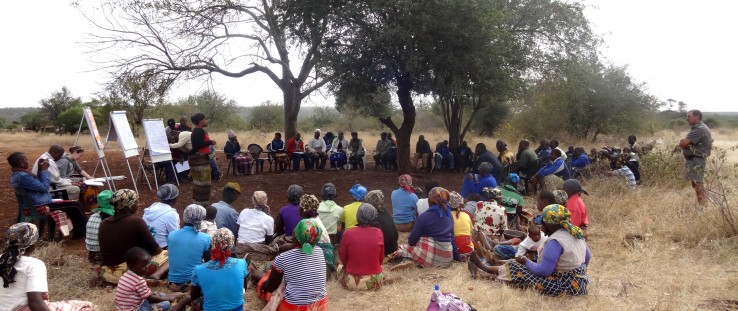 A Mangalana resilience village site in Mozambique
Photo courtesy of SAWC
A Mangalana resilience village site in Mozambique
Photo courtesy of SAWC
 A Mangalana resilience village site in Mozambique
Photo courtesy of SAWC
A Mangalana resilience village site in Mozambique
Photo courtesy of SAWC
A group of youth sits in a circle under a tree, enjoying the fresh breeze on a crisp spring morning in Makuleke village in the northern part of South Africa. A set of handmade maps lies on the ground as the youth engage in intense, yet fun discussions on climate change resilience.
This may not be what an outsider walking into this secluded national park peripheral community would expect to hear. Yet, sitting under this tree is exactly where these Makuleke village youth want to be. This is their hub for training and sharing best practices and experiences, which is central to the concept of “resilience villages.”
In southern Africa, USAID has taken a step toward climate smart development by creating a network of resilience villages to serve as training hubs to help communities adapt to climate change.
In partnership with the Southern Africa Wildlife College (SAWC), and building on the college’s reputation as a leading provider of training for conservation in the region, four training hubs have been established. The hubs consist of three to five villages each, with surrounding populations of 1,000-15,000. Men, women and youth participate, with sessions consisting of roughly 40-60 people.
The hubs are places already established by either the community or local NGO and serve as a community meeting place. Taking advantage of existing structures, the resilience village provides resources and hands-on training to build skills aimed at reducing vulnerability to the impacts of climate change.
These villages then serve as hubs to disseminate ideas and innovations to vulnerable communities, which in turn test these concepts and spread into other communities. As a result of participating in resilience village discussions, communities have created governance dashboards to gauge their progress toward good governance and smart decision-making.
The impact of climate change is already being seen in southern Africa, which includes Angola, Botswana, Lesotho, Malawi, Mozambique, Namibia, Swaziland, South Africa, Zambia and Zimbabwe. The region is highly vulnerable to the negative effects of climate change, which are predicted to include warmer climatic conditions, lower precipitation in spring and summer, and higher precipitation in winter.
Climate change is also likely to increase the incidence of extreme weather events such as droughts and floods, resulting in soil erosion, land degradation, decreased soil fertility and water stress. This will have serious implications for farming and significantly impact the livelihoods and food security of the vulnerable, particularly rural communities.
In a region where many areas are already water insecure and heavily dependent on rain-fed agriculture or nature-based tourism, there is a need to safeguard hard-won development gains by building an understanding of climate change impacts and implementing appropriate response measures.
“Introducing adaptation concepts to communities can be challenging,” said Doreen Robinson, USAID senior regional environment adviser. “We live in a world with so much information, and where the climate change message is often too technical, complicated and easily influenced by the cultural, social and political environment. USAID is committed to breaking these barriers to get good, relevant, understandable and timely climate information to people to help them change their lives for the better.”
Working through the Resilience in the Limpopo Basin Program, and in partnership with the SAWC, USAID is using resilience villages to talk with people here about climate change adaptation, good governance and alternative livelihoods.
Participants take part in mapping processes where local resource users and other community members sit together to identify and map important resources. Practical activities include monitoring governance structures and attitudes toward wildlife, protected areas and partner organizations; livelihood surveys; alternative land use practices; and a range of nature-based enterprises and products that provide “green social security,” particularly in the face of climate change.
“Ultimately, USAID’s goal is to build resilience to climate change by strengthening natural resource governance, earnings and benefit sharing in and around protected areas in the Limpopo River Basin,” said USAID Southern Africa Mission Director Cheryl Anderson.
Sites include the Makuleke Community Property Association, consisting of three villages in South Africa’s Great Limpopo Transfrontier Conservation Area (TFCA); the Mangalana Community consisting of five villages associated with the Sabie Game Park in Mozambique; the Mapungubwe TFCA consisting of villages in both Botswana and Zimbabwe; and the Bushbuckridge Community. Bushbuckridge is part of the Kruger to Canyons Protected Area, situated adjacent to the SAWC campus site in Hoedspruit, South Africa.
As a result of the resilience village concept, over 80 women from rural communities in Botswana, Mozambique, South Africa and Zimbabwe have been trained to better understand the value chains in bush produce enterprises and to improve business skills. For example, women have new skills to harvest Mopani worms, a local caterpillar that is a nutritious and important food source in the region. In Mozambique, better understanding of the value of wildlife led the community association to leverage other funding sources to employ at least 21community members as game scouts to prevent wildlife crime in the area.
Lamson Mululeke, 50, a member of the Makuleke community, said: “The one thing I believe in is this learning by doing. To me, the outlook of the Community Property Association in terms of governance has changed. It has moved from where it was two years ago.”
A highlight for him has been the shift in mindsets of previously withdrawn youth of Makuleke. The village has seen a much higher percentage of youth become actively involved with the governing body of the community.
Mbhoni Mengifi, 23, has become more involved in community-building activities as a result of the resilience villages and aspires to be a member of the Makuleke Community Association executive office in the next election. “I have learnt a lot and it has been an honor to get to know so much about how Makuleke is governed,” said Mengifi. “As a youth, I intend to take it from this point to the next level. Right now, we, the youth leaders, have come up with a strategy to raise awareness in schools through a volunteer program we call the Eco-Mentor, and now have 50 youth volunteers.”
For Sandra Du Plessis, a community-based natural resource manager and lecturer at SAWC, seeing a previously displaced and disadvantaged community in the national park buffer area of Mangalana stand up for its rights to a 20 percent conservation fee is a good reason to smile.
The Mangalana community was displaced after the creation of the Sabie Game Park in 2002. According to the laws of Mozambique, such a displaced community is entitled to a percentage of fees realized from game park tourism activities. Following resilience village discussions, the village successfully approached the park to negotiate a payment, and the governor presented them a well-deserved $10,000 check.
In a country where 70 percent of the population lives in rural areas, and where the vast majority still lives on less than $1.25 a day, village residents see this is as a good beginning.







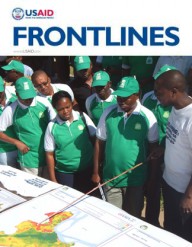

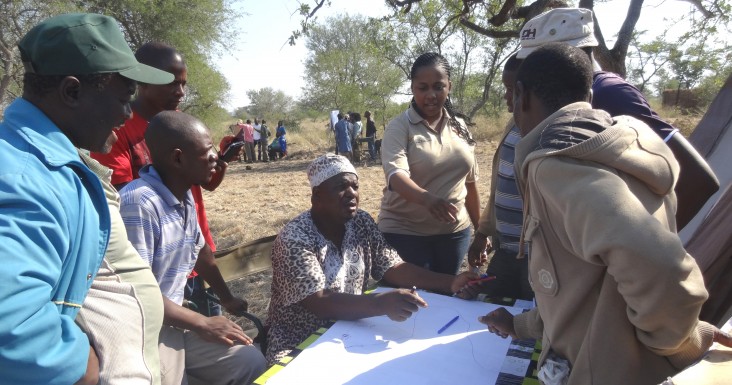
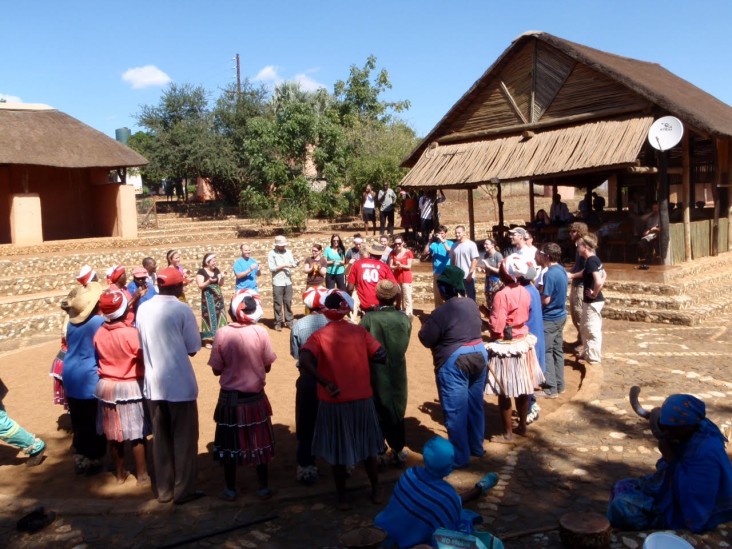


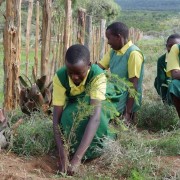
Comment
Make a general inquiry or suggest an improvement.